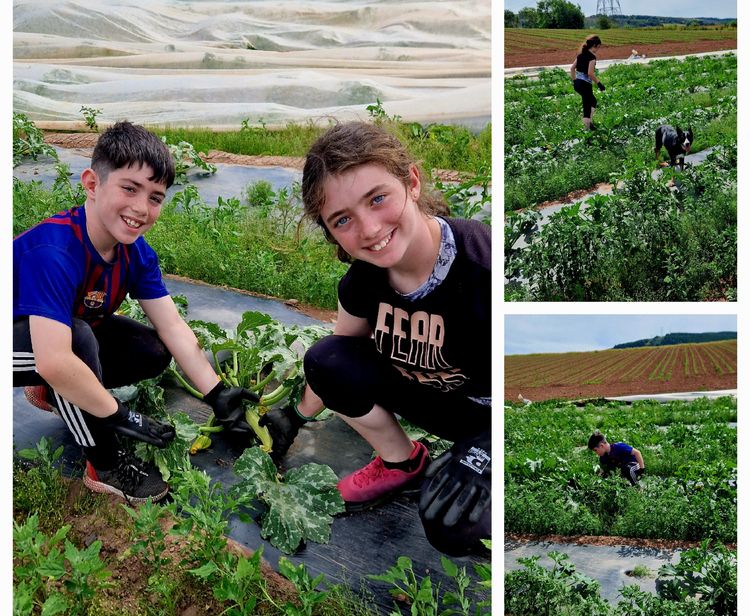
18th July
Apologies I haven’t done a newsletter for two weeks.
School holidays to blame, to much going away with Erin and Calum then having to do weeding with the tractor at nights and time gets eaten up.
Courgettes at long last have started, just a wee bit for now but they should be in all your nets by this week if not it will be the following.
The field veg this year has been a wee bit slower growing than usual, but things are coming on now.
Every week right now we are bed weeding, the new weeding machine is making the job much easier, and the better I get on it, the easier it is getting.
The swede crop is the most weed free crop I have ever seen, and we have only had to only pull out the tallest rouge weed.
The reason for that is, it was the last crop to be sown. And by the time it was ready for me to go in with the new camera guided weeding machine, I had been working with it for more than two weeks.
There is a lot to get used to, with setting the machine up, getting the camera working correctly, along with the speed I need to go.
And by the time I got to the swede I had it almost perfect.
It is an amazing machine, and it works better at speed, usually going in with weeding machine it is a slow job, so that has taken a bit of getting used to.
Trusting the camera to guide the machine as I go along is quite a thing to get used to.
Peat free compost is becoming a nightmare.
This year were onto completely peat free.
Great for the planet, but absolutely no use for leeks, onions and brassicas.
The problem being we bring on around 300 thousand of these seeds.
Our seed trays have 144 cells per tray, each cell only holds 80cc of compost.
And what is happening is that there is no feed left in the compost after the 4-week mark, and that is with me feeding seaweed on a weekly basis.
I have been in contact with soil association about this huge problem.
And the reply was yes, it is causing problems, they had suggested making our own compost and mixing it in.
Two problems there, first we need 6 tonne a year, and second, how do I check the NPK levels, are high enough for hungry leeks, onions and brassicas, and how do I know if they are high enough, if it will stay high enough for 3 months, we bring these plants on in February.
So I have been searching the web for weeks.
And hopefully found an answer.
There is a hill farm down in Cumbria that is mixing organic hill sheep wool, organic Scottish bracken, along with the wonder plant food Comfrey grown on their farm, and turning into compost.
There is I have been told enough feeding to take hungry plants right through to planting.
I have 3 trial bags arriving at the end of July. So fingers crossed.

